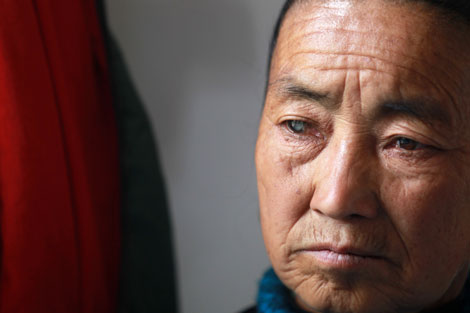New research not to be sneezed at
Updated: 2011-11-23 08:08
(China Daily)
|
|||||||||
|
|
A previous bout of seasonal H1N1 flu is thought to provide some measure of immunity to a new pandemic virus.
Immunity gained by coming down with a previous, seasonal version of the flu helped temper the severity of the pandemic flu that spread around the globe in 2009, according to a new study.
Texas researchers monitored hundreds of adults throughout the 2009-2010 flu season, and found that those who had had seasonal flu in the past were less likely to catch the pandemic strain, and less likely to be severely ill if they did, than people whose immune systems had not been exposed to earlier flu viruses.
People's immune systems remember past encounters with a particular virus, and that primes them to ward it off in the future. In the case of the pandemic of 2009, the influenza virus happened to be from the same family of flu strains, known as H1N1, as prior seasonal flus.
"They're both called H1 for a reason," says Mark Lipsitch, a professor at the Harvard School of Public Health, who was not involved in this study. "They're related. The pandemic is different from the seasonal H1, but it's still an H1."
H1 is a type of protein made by the flu virus. Once the immune system has been exposed to it, the body manufactures molecules called antibodies that recognize and block the H1 from helping the virus invade cells.
As the pandemic flu began to peak in the United States in the fall of 2009, the researchers followed the health of 513 adults on the Texas A&M University campus and in the town of College Station.
At the beginning of the study in September, the team took blood samples, and if anyone became ill they also collected a new blood sample and a throat swab.
Throughout the season, 116 people were infected with the pandemic flu virus as determined by the antibodies in their blood at the end of the study in the spring of 2010.
Thirty-three percent of those who had no evidence of antibodies to the previous season's flu at the start of the study became infected with pandemic flu.
In contrast, just 18 percent of people with antibodies to the seasonal flu subsequently came down with the pandemic flu.
Dr Robert Couch, the study's lead author and a professor at Baylor College of Medicine, says the results show that a previous bout of seasonal H1N1 flu gave people some immunity to the new pandemic virus.
Antibodies to the seasonal version of the flu may have protected people from infection by the pandemic strain or made their illness less severe than would be expected with a completely novel virus.
"The immunity did not prevent flu," Couch says. "We had an epidemic of flu but not the disaster that people had anticipated."
Compared to the 1918 flu pandemic, for instance, which killed an estimated 675,000 people in the US, the pandemic flu of 2009 is considered mild with at least 14,000 US deaths - less than some regular flu seasons.
Couch says he was not surprised by the team's results.
"The thing that impressed me most was the amazing similarity of the findings to what we had identified in 1977 when the Russian flu appeared," Couch says.
The Russian flu, also an H1N1-type virus, infected mostly younger people, likely because people older than 25 at the time had been exposed to an earlier H1N1 virus that circulated until the late 1950s.
Just like in 2009, people had some immunity to H1N1 in 1977 when the so-called Russian flu appeared.
Lipsitch says immunity to seasonal flu might be one of many factors that contributed to the mildness of the 2009 pandemic.
"I think it's really hard to tease apart what are the factors," he says.
Reuters












